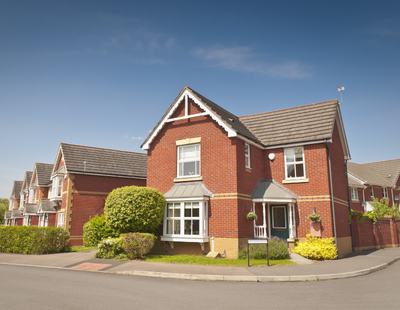
Brand new data from online mortgage broker Mojo Mortgages has revealed significant differences in the types of properties the average UK house price can purchase across the country's major cities, providing valuable insights for property investors.
Their analysis of over 3,200 properties currently on the market for around the current average house price (£261,142) found that the most common property is a 2.18-bedroom, semi-detached house with 1.26 bathrooms.
However, when broken down city by city, the findings show stark contrasts in what the national average can buy.
In Northern cities like Middlesbrough, landlords can potentially secure a 3.85-bedroom detached house for the average price, which could command strong rents.
This makes it an attractive option for landlords who would like to purchase properties that are likely to acquire families.
This is then followed closely by another Northern city, Sunderland, where the national average property purchase is likely to be able to purchase property investors a 3.67-bedroom detached property. Again, a property of this size is likely to appeal to families and generate a solid rental yield.
Rounding up the top three is Kingston Upon Hull. Here, property investors can purchase a detached property with an average of 3.50 bedrooms, with the national average property price.
Here is a table of the top 10 cities with the highest number of bedrooms.
|
City / Town
|
Region
|
House Type
|
Avg. house price
|
Avg. number of bathrooms
|
Avg. number of bedrooms
|
|
1. Middlesbrough
|
Yorkshire Humber
|
Detached
|
£261,150
|
1.69
|
3.85
|
|
2. Sunderland
|
North East
|
Detached
|
£261,104
|
1.86
|
3.67
|
|
3. Kingston upon Hull
|
Yorkshire Humber
|
Detached
|
£260,708
|
1.63
|
3.50
|
|
4. Swansea
|
Wales
|
Detached
|
£259,409
|
1.57
|
3.45
|
|
5. Glasgow
|
Scotland
|
Semi-Detached
|
£260,314
|
2.36
|
3.16
|
|
6. Stoke-on-Trent
|
West Midlands
|
Detached
|
£261,106
|
1.59
|
3.13
|
|
7. Ipswich
|
East
|
Semi-Detached
|
£260,407
|
1.38
|
3.09
|
|
8. Huddersfield
|
Yorkshire Humber
|
Semi-Detached
|
£260,722
|
1.36
|
3.06
|
|
9. Sheffield
|
Yorkshire Humber
|
Semi-Detached
|
£260,599
|
1.47
|
3.06
|
|
10. Newcastle upon Tyne
|
North East
|
Semi-Detached
|
£261,413
|
1.62
|
3.05
|
Southern cities provide smaller flats with limited rental potential for the national average house price
In contrast, Southern cities are more limiting for landlords that have a budget of around the national average house price (£261,142).
Out of the 45 towns and cities analysed, Brighton has the lowest number of bedrooms. Here, home buyers are most likely to be able to afford a flat or apartment with 1.31 bedrooms and 1.02 bathrooms.
This is then followed by Oxford, with the national average house price typically securing a flat or apartment with 1.5 bedrooms and 1.25 bathrooms.
Finally, another university hotspot, Cambridge, then finishes as having the third smallest number of bedrooms. Here, the national average house price can most typically purchase a 1.56 bedroom flat or apartment, with 1.00 bathrooms exactly.
Want to comment on this story? Our focus is on providing a platform for you to share your insights and views and we welcome contributions.
If any post is considered to victimise, harass, degrade or intimidate an individual or group of individuals, then the post may be deleted and the individual immediately banned from posting in future.
Please help us by reporting comments you consider to be unduly offensive so we can review and take action if necessary. Thank you.
















.jpg)






%20(002).png)



.jpg)
.jpg)






Join the conversation
Jump to latest comment and add your reply
Why would any LL want to invest?
The hassle is far too great, the margins too small and the figures no longer stack up.
Even if you were investing, you'd be looking at cheaper property, nothing at average price, the yields would be far too low. Also there is no point having nicer more expensive property as it only gets trashed and it's even more soul destroying. All so fussy when they move in, but not so much when they move out!!
I wouldnt buy another buy to let for half price!
I agree with Shane- not even at a quarter of the price. However when its possible to create accommodation for 3 more tenants for under £30k which will generate over £20k pa additional gross rental income, I find these sums compelling.
I have been benefitting from the effects of the interference by the SNP and their little Green helpers in the Scottish prs market with my rents increasing in 2018 by about 30% and again in 2023 by 33%, all during an apparent freeze in evictions and rent freezes and caps!
I have done this by focusing solely on the student market and over the last 5 years I have increased the capacity of 3 flats by creating an internal kitchen and converting the kitchen into a third or fourth bedroom, usually for under £10k and with a payback of under 2 years.
Many of these flats have large square entrance halls which could easily be made into a kitchen, dining room or internal lounge but HMO regulations prohibit any furniture other than a hall table thus wasting up to 25% of the available floor space which could be so much more gainfully employed fornext to no additional cost.
I have also just added a third bedroom and internal kitchen to a former 2 bedroom flat and added 2 attic rooms to a 3 bed bungalow. HMO Licence delays mean these are currently empty but despite the massive housing shortage our Council masters don't seem in any hurry to help me make a small contribution to solving it!
Glasgow is full of spacious flats with a lounge, 1 or 2 bedrooms and dining kitchen which can easily be converted into 3 or 4 bed HMO'S with a payback of under 2 years.
Pushing further owner occupancy will see typical occupation by 1 or at best 2 people whereas encouraging private landlords would see these fully occupied by up to 4 people.
While we certainly need to be building 300,000 new homes every year ( don't mention 800,000 legal imigrants!) we can also easily grow the capacity of our existing housing stock with a bit of imagination and cooperation - like cooperating with private landlords, incentivising retired empty nesters to downsize without massive Stamp Duty bills, incentivising landlords to sell up without massive cgt bills.
Every Government initiative is based on negative punishments and ineffective deterrents. What about trying the carrot instead of the stick?
Please login to comment